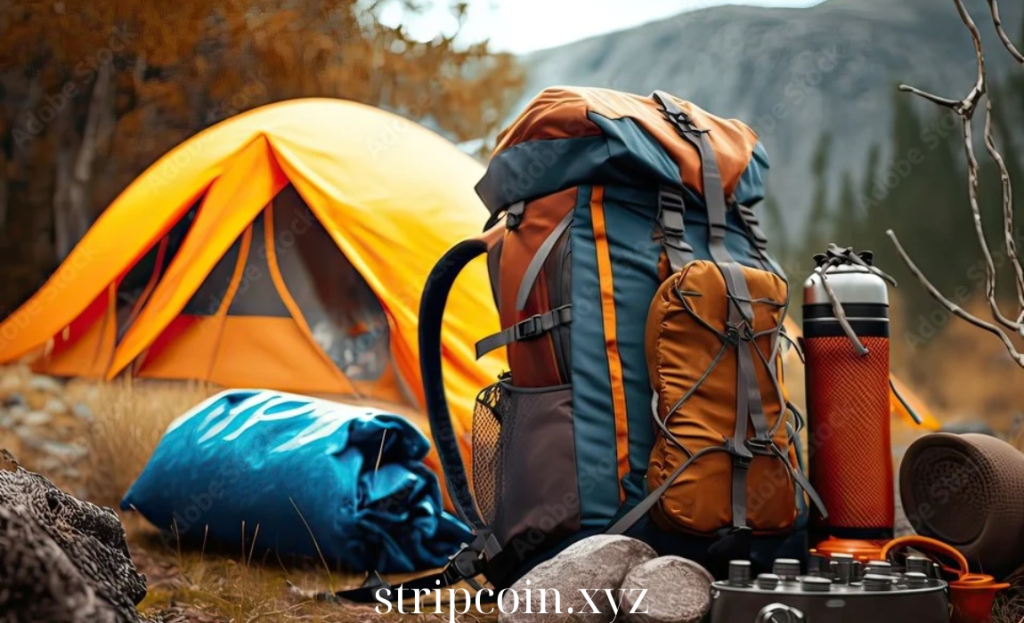Expeditions
Expedition Gear: Essential Equipment for Your Next Adventure
Whether you’re planning a multi-day hike in the wilderness, a mountain-climbing expedition, or an off-the-grid exploration, having the right gear is critical to the success of your adventure. The right equipment ensures your safety, comfort, and ability to navigate challenging terrains while keeping your load manageable. Here’s a comprehensive guide to the essential expedition gear you need for your next adventure, focusing on durability, functionality, and versatility.
1. Backpack: Your Base of Operations
A high-quality expedition backpack is one of the most important pieces of gear for any adventure. It needs to be durable, comfortable, and capable of carrying everything you need for extended periods.
Key Features of a Good Expedition Backpack:
- Capacity: For multi-day trips, look for a backpack with a capacity of 50 to 80 liters, depending on the length of your adventure. Larger capacities are necessary for winter expeditions or when carrying extra gear like climbing equipment.
- Support: A well-padded, adjustable hip belt and shoulder straps distribute weight evenly and reduce strain on your back. An internal frame provides added stability.
- Accessibility: Look for backpacks with multiple compartments, external pockets, and easy access to your gear. Some have front or side zippers that allow you to access gear without unpacking everything.
- Water Resistance: Opt for backpacks made from water-resistant materials, or invest in a rain cover to protect your gear in wet conditions.
Example: The Osprey Aether AG 70 is a popular choice for long expeditions due to its excellent comfort, multiple access points, and adjustable harness system.
2. Navigation Tools: Finding Your Way
In remote areas where GPS signals may fail, reliable navigation tools are crucial. Always bring analog navigation equipment along with any digital tools.
Essential Navigation Gear:
- Map and Compass: A topographic map of the area and a quality compass are non-negotiable for navigating off-the-beaten-path. Learn how to use them effectively before your trip.
- GPS Device: A handheld GPS device can provide real-time navigation and tracking. Some models, like the Garmin GPSMAP 66i, also offer satellite communication, which can be critical in emergencies.
- Altimeter Watch: An altimeter watch measures elevation and can help you keep track of your position on a map. It’s especially useful in mountainous regions.
- Personal Locator Beacon (PLB): In case of emergencies, a PLB sends out a distress signal with your location, even when there’s no cell service.
Example: The Garmin InReach Mini combines GPS tracking with satellite communication, allowing you to send messages and share your location in areas without cell service.
3. Shelter: Protection from the Elements
Your shelter will be your home base during the expedition, and it needs to be able to withstand the elements, provide comfort, and be easy to set up and pack.
Essential Shelter Gear:
- Tent: For multi-day adventures, invest in a four-season tent if you’re heading into extreme weather or a three-season tent for milder conditions. Make sure it’s lightweight but durable enough to protect you from wind, rain, or snow.
- Tarp: A lightweight tarp can be used for additional weather protection, either over your tent or as a standalone shelter for quick breaks or cooking.
- Sleeping Bag: Choose a sleeping bag that matches the temperature conditions of your expedition. A down-filled bag is warm and compressible, while synthetic bags handle moisture better.
- Sleeping Pad: A sleeping pad provides insulation and cushioning, which is essential for a good night’s sleep in cold or rocky terrain. Foam pads or inflatable pads with high R-values are best for cold environments.
Example: The MSR Hubba Hubba NX tent is highly regarded for its lightweight design and durability, making it ideal for long expeditions where pack weight is a concern.
4. Clothing: Layering for Versatility
Your clothing system should be based on a layering approach, allowing you to adjust as conditions change throughout the day. Choose moisture-wicking, quick-drying fabrics to manage sweat and insulate against the cold.
Essential Clothing Layers:
- Base Layer: A moisture-wicking base layer (synthetic or merino wool) keeps sweat away from your skin, preventing chills in cold weather. Lightweight options work best for warm weather, while midweight or heavyweight base layers are essential for colder conditions.
- Mid Layer: A fleece or down jacket serves as the insulating layer. Down jackets offer superior warmth but lose effectiveness when wet, while synthetic options provide insulation even in damp conditions.
- Outer Layer: A waterproof and windproof shell protects you from rain, snow, and wind. Look for jackets made from breathable, waterproof fabrics like Gore-Tex.
- Footwear: Sturdy hiking boots with ankle support and waterproofing are essential for rugged terrain. Ensure they are well broken-in before your trip to prevent blisters. For snowy or icy conditions, consider crampons or microspikes.
- Accessories: Pack gloves, a warm hat, and a buff or neck gaiter to protect against the cold. For sunny conditions, bring a wide-brimmed hat and sunglasses with UV protection.
Example: The Arc’teryx Beta AR jacket is a favorite among outdoor enthusiasts for its lightweight, durable, and waterproof design, making it suitable for harsh conditions.
5. Cooking and Food: Fuel for Your Adventure
Proper nutrition and hydration are critical to maintaining energy levels on an expedition. Choose lightweight, high-calorie food options and gear that simplifies cooking in the wild.
Essential Cooking and Food Gear:
- Lightweight Stove: A compact backpacking stove, such as the Jetboil Flash, is perfect for quickly boiling water and cooking meals. Make sure to pack enough fuel for the duration of your trip.
- Cookware: A lightweight pot and spork set is all you need for most meals. Titanium cookware is popular for its durability and light weight.
- Food: Opt for dehydrated or freeze-dried meals that are calorie-dense and lightweight. You can also pack trail mix, energy bars, and jerky for snacks. Plan for at least 3,000 to 4,000 calories per day for long expeditions.
- Water Filtration: Clean water is essential. A portable water filter, such as the Sawyer Squeeze or LifeStraw, allows you to drink from natural water sources without carrying large amounts of water.
- Hydration System: Use a hydration bladder or water bottles to keep yourself hydrated throughout the day. Consider a collapsible water bottle for space-saving when not in use.
Example: The Jetboil Flash Stove System boils water in minutes, making it perfect for quick meals or hot drinks during cold mornings in the backcountry.
6. Safety and First Aid: Be Prepared for Anything
Safety should always be a priority on any expedition. A well-stocked first aid kit and emergency equipment can help you manage injuries and handle unexpected situations.
Essential Safety Gear:
- First Aid Kit: Pack a comprehensive first aid kit that includes bandages, antiseptics, blister care, pain relievers, and any personal medications. For longer trips, consider adding a splint, wound closures, and a compact medical guide.
- Multi-Tool: A quality multi-tool, like a Leatherman, is invaluable for handling gear repairs, food preparation, or first aid needs.
- Fire Starter: Always carry waterproof matches, a lighter, and fire-starting materials such as a fire starter or cotton balls soaked in petroleum jelly.
- Headlamp: A reliable headlamp with extra batteries is crucial for hands-free lighting in low-visibility conditions. Look for models with adjustable brightness and a red-light mode to preserve night vision.
Example: The Black Diamond Spot 350 Headlamp provides bright, adjustable lighting, is water-resistant, and has a long battery life, making it ideal for any expedition.
7. Additional Gear for Specific Adventures
Depending on the nature of your expedition, you may need specialized gear to tackle the terrain or environment.
Additional Gear Options:
- Climbing Gear: For mountaineering or rock climbing, bring harnesses, ropes, carabiners, belay devices, and helmets. Ensure that all climbing equipment is rated for safety.
- Snow and Ice Gear: In snowy or icy conditions, pack crampons, an ice axe, and snowshoes or skis. Avalanche safety gear, including a transceiver, probe, and shovel, is essential for backcountry snow travel.
- Water Gear: For water-based expeditions, pack a dry bag to keep your gear safe from moisture, along with paddling gloves, a personal flotation device (PFD), and a wet or dry suit depending on the conditions.
Example: The Petzl Summit Ice Axe is lightweight yet durable, making it a great choice for snow and glacier trekking where self-arrest capabilities are needed.
Conclusion
An adventure into the wild requires careful preparation and the right gear to ensure your safety, comfort, and success. From backpacks and navigation tools to shelter and clothing, each piece of equipment plays a critical role in your expedition. By investing in high-quality, durable gear and tailoring your equipment to the specific environment you’ll be exploring, you’ll be ready to tackle whatever challenges your next adventure presents.

